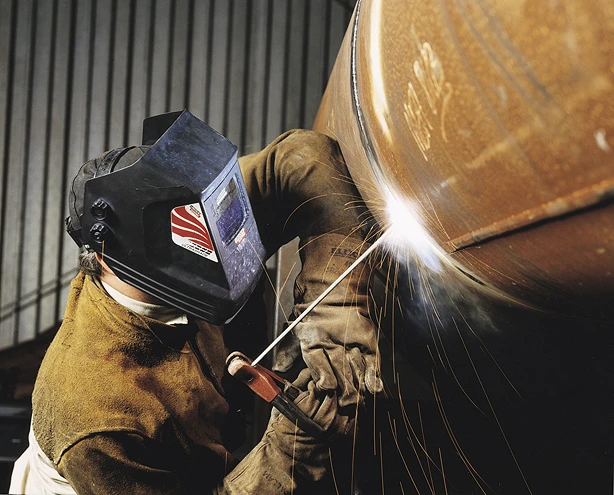The Ultimate Overview to Welding WPS Procedures: A Comprehensive Summary for Welders
In the elaborate globe of welding, Welding Procedure Requirements (WPS) work as the foundation of ensuring high quality, consistency, and safety and security in welding operations. Understanding the nuances of creating, implementing, and monitoring WPS treatments is necessary for welders seeking to boost their craft and meet industry requirements. As we look into the different components of a WPS and check out the ins and outs of credentials and certification, we will discover the crucial role these procedures play in the realm of welding. Allow's embark on a journey to untangle the complexities and importance of WPS procedures in welding methods.
Importance of WPS Procedures
Understanding the significance of Welding Procedure Requirements (WPS) treatments is critical for ensuring the top quality and honesty of welded frameworks. WPS treatments work as a roadmap for welders, describing the necessary steps, criteria, and materials needed to accomplish a sound weld. By sticking to WPS standards, welders can guarantee uniformity in their work, resulting in structurally sound and trustworthy welds.
One of the main reasons why WPS treatments are necessary is their role in keeping weld high quality and integrity. Adhering to the defined welding criteria and strategies outlined in the WPS helps stop defects such as porosity, breaking, or incomplete blend, which can endanger the strength and toughness of the weld. Additionally, WPS procedures are crucial for making sure compliance with industry criteria and codes. By adhering to well established WPS guidelines, welders can demonstrate that their work meets the essential demands for safety and quality, giving guarantee to clients, examiners, and governing bodies. Basically, the importance of WPS treatments can not be overemphasized, as they are basic to achieving constant, premium welds that meet sector criteria and specifications.

Components of a WPS
A Welding Procedure Specification (WPS) commonly consists of important parts that detail the details demands for carrying out a weld, making sure uniformity and top quality in the welding procedure. The crucial components of a WPS include crucial variables such as base steels, filler metals, interpass and preheat temperatures, welding procedures, protecting gases, welding positions, and post-weld heat treatment requirements.
Base metals refer to the products being joined, while filler metals are made use of to load the space in between the base metals throughout welding. Preheat and interpass temperatures are crucial for regulating the warm input and stopping problems like cracking or distortion. The welding procedure outlines the details strategy to be utilized, whether it's gas metal arc welding (GMAW), secured metal arc welding (SMAW), or another technique. Securing gases protect the weld pool from atmospheric contamination. Welding placements define the orientations in which welding can be executed. Post-weld warmth treatment may be needed to eliminate anxieties and boost the weld's buildings. An extensive understanding of these elements is essential for producing a extensive and efficient WPS.

Qualification and Certification
Having established the necessary components of a Welding Procedure Spec (WPS), the focus now moves towards the essential facets of credentials and qualification in welding practices.

Qualification, on the other hand, is the formal acknowledgment of a welder's certifications by a relevant certification body or company. Welding accreditations are commonly based on the particular welding processes, products, and settings a welder is qualified to function with. Holding a valid welding qualification shows that a welder meets sector criteria and is qualified to execute welding jobs to the required specifications.
Creating a WPS
To create a Welding Procedure Requirements (WPS) that satisfies market standards, cautious factor to consider of welding processes, materials, and operational parameters is important (welding WPS). The initial step in developing a WPS is to identify the welding procedure to be made use of, such as gas This Site metal arc welding (GMAW) or protected metal arc welding (SMAW) When the welding procedure is figured out, the following crucial element is choosing the proper products, taking into consideration aspects like base steel kind, density, and joint design. Operational specifications such as welding current, voltage, travel rate, and protecting gas structure should also be meticulously specified in the WPS.

Carrying Out and Checking WPS
Upon completing the extensive Welding Procedure Spec (WPS) that diligently details welding procedures, products, operational parameters, and high quality guarantee procedures, the focus moves to effectively executing and checking the well-known treatments. Application involves guaranteeing that all welders entailed in the task know with the WPS and follow see this page it thoroughly throughout the welding procedure. This needs offering sufficient training and guidance to ensure adherence to the specified treatments. Keeping an eye on the WPS includes continuous oversight to validate that welding tasks align with the documented specifications. Examinations, testing, and quality assurance actions are crucial parts of the surveillance procedure to determine any kind of variances or issues immediately. Routine audits and testimonials of the welding procedures assist in maintaining consistency and quality throughout the project. Effective application and surveillance of the WPS are vital for guaranteeing the honesty, toughness, and security of the bonded joints, eventually contributing to the overall success of the welding look at this now task.
Final Thought
In conclusion, understanding and following Welding Treatment Specs (WPS) is critical for welders to guarantee top quality, uniformity, and safety and security in their work. By understanding the components of a WPS, getting proper credentials and accreditations, creating thorough procedures, and carrying out and monitoring them effectively, welders can improve their abilities and efficiency in welding practices. Complying with WPS procedures is necessary for generating high-grade welds and meeting sector requirements.
In the intricate globe of welding, Welding Procedure Specs (WPS) offer as the foundation of making certain top quality, uniformity, and security in welding procedures. The welding procedure outlines the certain technique to be made use of, whether it's gas metal arc welding (GMAW), shielded steel arc welding (SMAW), or one more method.To develop a Welding Treatment Requirements (WPS) that fulfills market criteria, mindful factor to consider of welding processes, materials, and functional criteria is important. The first action in developing a WPS is to determine the welding procedure to be made use of, such as gas steel arc welding (GMAW) or protected metal arc welding (SMAW)Upon settling the thorough Welding Treatment Spec (WPS) that thoroughly details welding procedures, products, operational parameters, and top quality assurance procedures, the focus moves to successfully executing and checking the well established procedures.